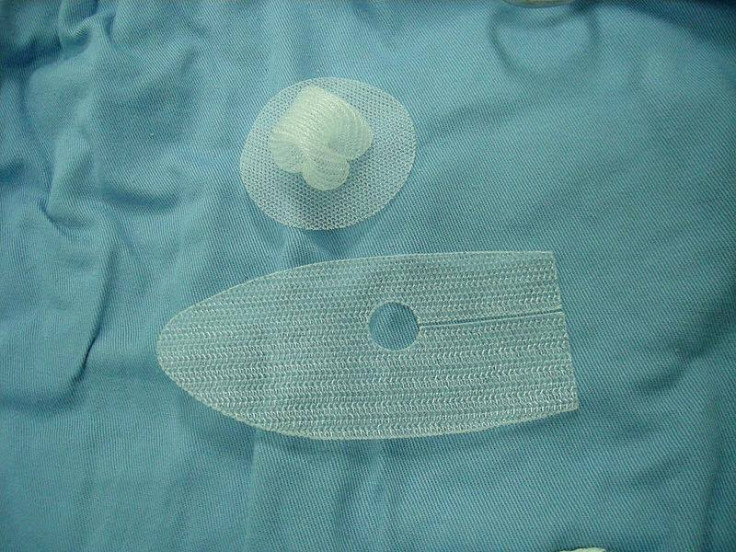What are hernia mesh treatments? The controversial procedure left one woman in agony
Mesh is same material as used in controversial vagina implants that led to numerous woman unable to walk.

A woman has spoken out about the excruciating side-effects of a hernia mesh treatment and how it changed her life.
Jennifer Coles from London had an operation to treat her inguinal hernia in her groin in February last year, and was left barely able to walk after having the mesh put in, Sky News reported. She compared trying to move as the feeling of a shard of glass catching on her groin.
The procedure uses the same material as controversial vagina mesh implants, which led to 800 women seeking legal action after reporting symptoms such as the inability to walk or have sex without severe pain.
Unlike vagina mesh treatments, there are allegedly no guidelines from the UK health watchdog NICE on the use of mesh for treating hernias.
Coles decided to have the mesh removed despite the risks associated with such an operation - the mesh is designed to be permanent so is complicated to reverse.
"I want my life back. I am essentially confined to home. I could barely walk and when I did I was hunched over. The operation to remove the mesh was traumatic and very risky as the hernia is close to major arteries," she told Sky.
Consultant Surgeon Nicholas Marham is part of the Royal College of Surgeons and told IBTimes UK: "Mesh is used because it is strong, flexible, light and essentially inert. It reinforces weakened tissues and bridges any gaps. It becomes incorporated in tissues of the body which grow into it rather like fibreglass does when it is used to strengthen structure."
A spokesperson for The British Hernia Centre told IBTimes UK: "We have performed more of these hernia repairs using mesh than any hospital in the world. The problems attributed to the use of mesh in certain gynaecological procedures has muddied the waters and has improperly become associated by some with hernia repair. The use of mesh, far from being a problem in hernia repair, has revolutionised the procedure."
They added that thanks to mesh, recovery periods are now days not weeks and months like they would have been under 'keyhole' and 'stitched' repairs.
"As the world's leading specialist hernia centre, we also tend to see a higher proportion of complex cases than most. Used properly, mesh in hernia repair is inert, sterile and unproblematic."
What is a hernia?
A hernia happens when an internal part of the body pushes through muscle or tissue, according to the NHS website. Hernias are very common, with one in ten people developing them.
Hernias usually develop between the chest and hips and in many cases cause very few or no symptoms. Although, it can often show through swelling or lumps in the abdomen or groin region.
There are various types of hernai - inguinal, femoral, umbilical, hiatus - which differ in the area of the body affected.
How are hernias treated?
Whilst hernias will not get better without surgery, sometimes the risk of the latter mean the risks outweigh the benefits. Around 80,000 hernia operations take place every year.
If it contains a part of the bowel, muscle or other tissue, for example, there may be a risk of strangulation of muscles or bowels for example, meaning surgery is too risky.
If operated on, the two main surgeries are 'open' - where one cut allows the lump to be pushed back into the abdomen - and 'keyhole' (laparoscopic) surgery - a more complicated procedure where several smaller cuts are made and the surgeon uses tools to repair the hernia.
Who is at risk?
There are several factors that can increase chances of a hernia according to Total Hernia Repair Centre.
These include genetics, being a man and being overweight - this can increase chances especially after routine abdomen surgery. Heavy lifting is another cause - regular weight lifting can place pressure on the abdomen. Constipation - and pregnancy this can also weaken the abdominal muscles.






















